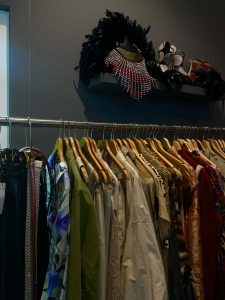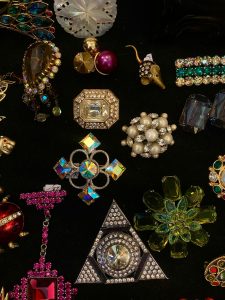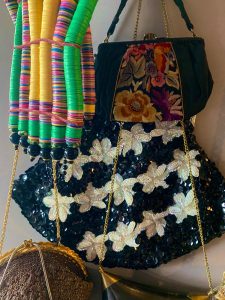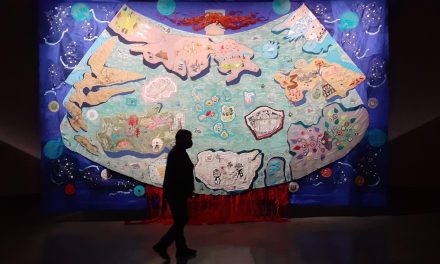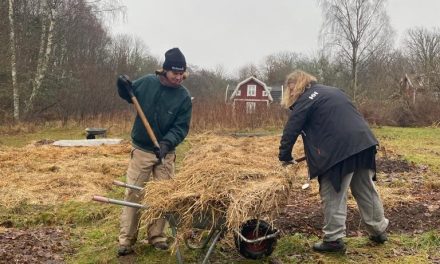“every time you buy a piece of clothing, it’s a vote for the kind of world you want to live in”
According to the UN Alliance for Sustainable Fashion, the clothing industry loses over 500 billion USD annually due to a lack of recycling of clothing discarded in landfills. With growing awareness of the significance of purchasing more sustainably, Statisica revealed that secondhand purchases are rising, with the UK up 11% and Germany up 14% over a 12-month period in 2023.
Garments Vintage, proudly owned by Sanda Keil is a perfect example of how the vintage fashion scene has become so immersed within Berlin’s society. Emanating natural light displayed the array of colors, patterns, and glistening jewelry to the store’s visitors and those simply passing by. While competition is inevitable within any sector, Sandra feels second-hand shopping is on the rise due to increased education on the matter. Discussing the true value of clothing with Sandra led to an important question about what the consumer might have to say about all of this. Hajar, an Iranian woman with a diverse cultural fashion background, highlighted how her experiences influenced her current wardrobe choices.
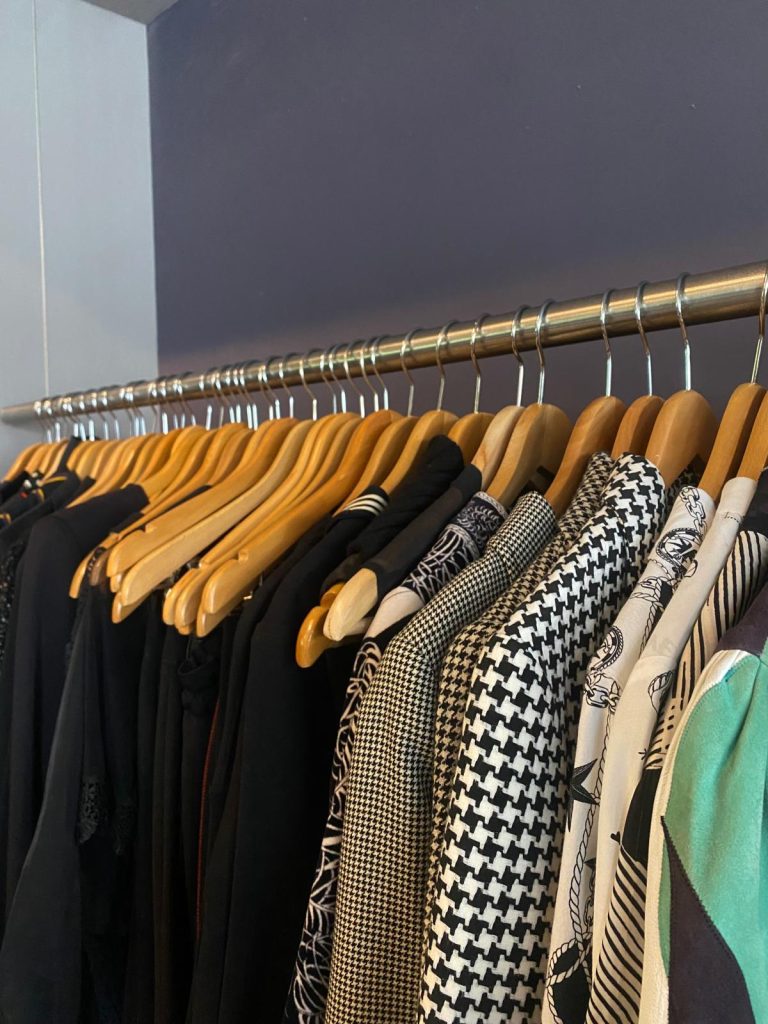
Back to basics. By Ailish Armstrong.
Fashion trends are changing much faster than ever before. This fast-paced system has paved the way for the fast fashion industry to capture the hearts and wallets of consumers, worldwide. Behind the countless fast fashion outlets, lies an industry built on environmental degradation and rampant overconsumption. As awareness of these issues increases, so does the shift in mindset towards more ethical shopping. From more conscious consumerism to decision-making regarding materials and working conditions, many people including Gen Z are making more conscious efforts to reverse the damage caused by the fast fashion industry.
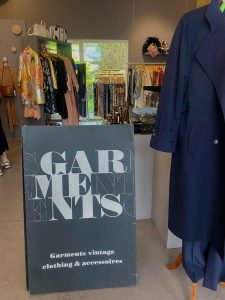
Entrance of Garment’s Vintage. By Ailish Armstrong
Vintage shop owner Sandra Keil spoke about her experience in the second clothing industry and her concerns about the fast fashion industry. Coming from a creative background in film, Sandra opened a shop in Berlin in 2009 but began to see the struggle of competing with the fast fashion industry over the following years.
“2017 to 2018 were difficult years for us. We found it quite difficult to buy and sell because the fast fashion industry sort of pushed us into the corner. Things are so much cheaper now. You can pay two euro for a T-shirt. We are getting that t-shirt for two euro, but we are living on somebody else.”
However, after the Covid 19 pandemic, Ms. Keils said she saw much more positive change. Sandra explained why she believes people are now moving away from fast fashion and making moves to towards more ethical buying.
“I think more and more people are beginning to realise that what is happening and understanding more is not more. I feel like people are being more creative now too.”
Sandra also discussed how she noticed her customers shopping in different ways.
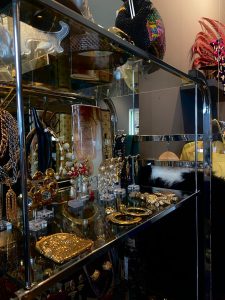
Hidden gems.
By Ailish Amstrong.
“A lot more young people are playing more now. Women’s fashion isn’t women’s fashion and men’s fashion isn’t men’s fashion anymore. Things are mixing up a bit. Vintage shopping is shopping for unique pieces- to find that one-of-a-kind piece. It’s like digging for gold!”
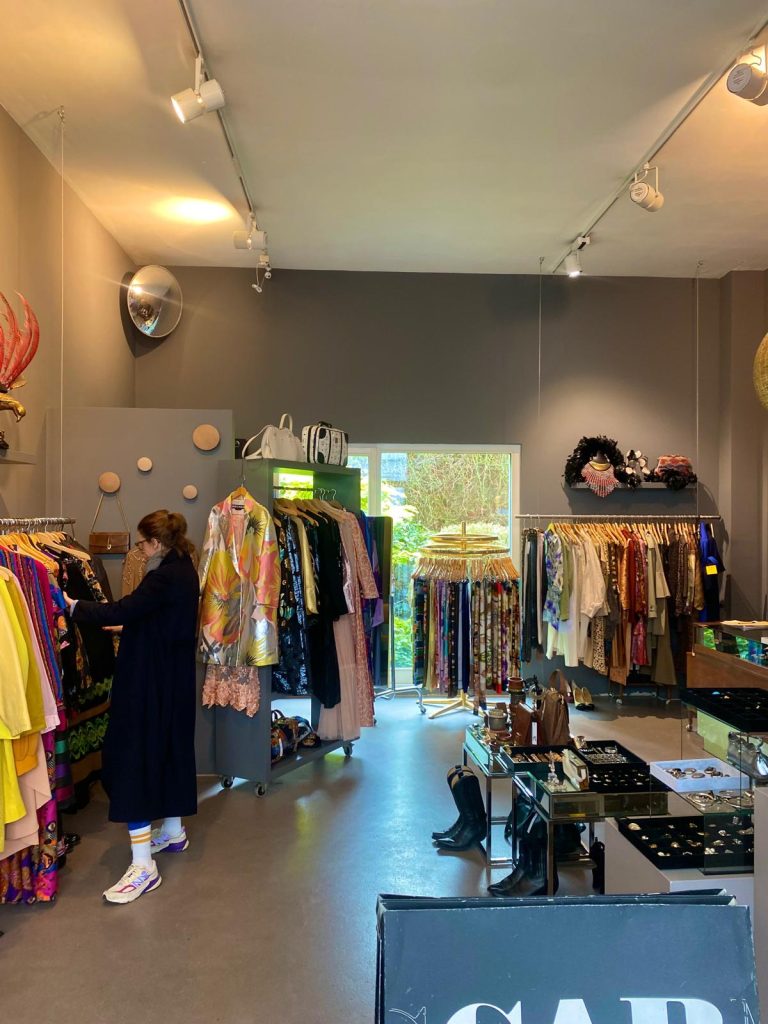
Through the eyes of the consumers digging for gold! – By Ailish Armstrong.
To reason both sides of consumerism in the sustainable and fast fashion sectors, it felt best to interview a consumer of both. Hajar is an Irian woman with a distinctive history when it comes to purchasing her clothing. With fashion influences from Iran, France, and The Netherlands her consumption has changed over time. The fashion lover who previously blogged about her efforts at buying more sustainably, spoke briefly about how she transitioned to more conscious choices, thanks to her self-taught education. Hajar emphasized that sustainable shopping was not always an option for her.

Hajar, fashion enthusiast and previous style blogger. By Ailish Armstrong.
“In my home country Iran, sustainable clothes are not yet a thing. I never thought about whether they were sustainable, but there is not a lot of education on this in Iran. The first time I learned about sustainable shopping was in France, through watching a French YouTuber called Justine Leconte, who IS a fashion designer, and the topic she covers is sustainability. That’s how I got into the whole topic, how to shop and live sustainably.”
Hajar also spoke about how she developed her style between her high-street fashion pieces alongside her vintage and second-hand pieces. While Hajar admitted to finding it particularly difficult to purchase all her pieces in a climate-conscious way, she commented on her ongoing effort to try to do so, nonetheless.
“ I like to mix my clothing between vintage and Highstreet brands. Sometimes it is challenging to mix them up, but I like the creativity behind it. I try to always stick by my golden rule by saying to myself; ‘Is this a need or a want?’ ”

